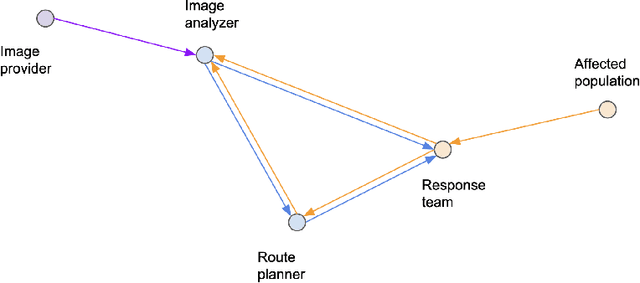Multi-AI Complex Systems in Humanitarian Response
Paper and Code
Aug 24, 2022
AI is being increasingly used to aid response efforts to humanitarian emergencies at multiple levels of decision-making. Such AI systems are generally considered as stand-alone for decision support, with ethical assessments, guidelines and frameworks applied to them through this lens. However, as the prevalence of AI increases in this domain, such systems will interact through information flow networks created by interacting decision-making entities, leading to often ill-understood multi-AI complex systems. In this paper we describe how these multi-AI systems can arise, even in relatively simple real-world humanitarian response scenarios, and lead to potentially emergent and erratic erroneous behavior. We discuss how we can better work towards more trustworthy multi-AI systems by exploring some of their associated challenges and opportunities, and how we can design better mechanisms to understand and assess such systems. This paper is designed to be a first exposition on this topic in the field of humanitarian response, raising awareness, exploring the possible landscape of this domain, and providing a starting point for future work within the wider community.
 Add to Chrome
Add to Chrome Add to Firefox
Add to Firefox Add to Edge
Add to Edge